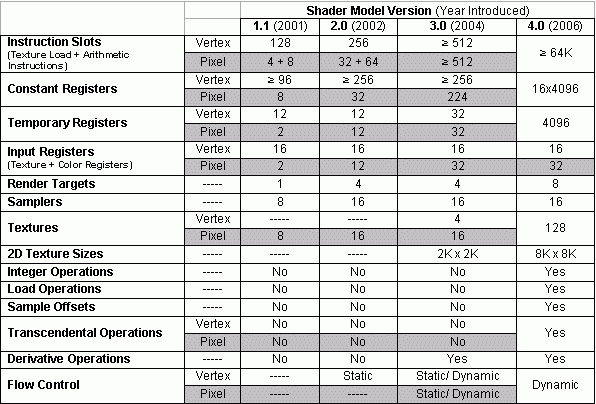What Direct3D 10 Is All About
Improved Programmer Expressiveness
One constraint on content development is getting the artist's intent and creativity onto the screen. Humans have the ability to conjure realistic images in their minds, which contain all of the detail of opening their eyes to the real world. Computer graphics is very different, as the logic in our minds is much more dynamic than that of a computer. The silicon is set in stone and cannot be changed once it leaves the factory - at least until the advent of programmable shaders. However, programmable shaders are only one component of the rendering engine. Constraints are placed on what can and cannot be calculated, as there is limited computational horsepower.
As the needs of programmers has increased, a new standard for hardware implementation and software coding has come up to keep ahead of the demand. The need is there again, and Direct3D has upped the ante on what shaders can do.
Below is a table showing the changes in shader model constraints. Without going too deep, the main concept to pull from the table is that Shader Model 4.0 (SM 4.0) is far more advanced than any previous version. It also takes away the concept of vertex shader or pixel shader only designs. One key step, as listed in Blythe's paper and lecture, is that fixed function shaders will become a thing of the past.
Get Tom's Hardware's best news and in-depth reviews, straight to your inbox.
Current page: Improved Programmer Expressiveness
Prev Page What's Changed? Next Page Tighter Hardware Specifications